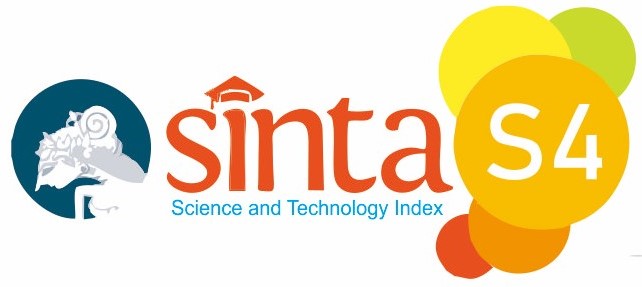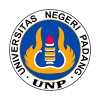HUBUNGAN FASILITAS BENGKEL TERHADAP MINAT BELAJAR SISWA KELAS XI TEKNIK PENGELASAN BUSUR MANUAL
Abstract
Pendidikan teknik memiliki peran penting dalam membentuk keterampilan dan pengetahuan siswa, khususnya dalam bidang Teknik Pengelasan. Pemahaman terkait minat belajar siswa mencakup pengetahuan dan interpretasi terhadap faktor-faktor yang memengaruhi tingkat ketertarikan dan motivasi siswa dalam mengikuti pembelajaran. Penelitian ini bertujuan untuk menginvestigasi hubungan antar minat belajar dan fasilitas bengkel siswa pembelajaran Las Busur Manual kelas XI di SMK N 1 Guguak. Metode penelitian diterapkan ialah korelasional kuantitatif, dengan tujuan mengeksplorasi sejauh mana hubungan antar minat belajar dan fasilitas bengkel siswa kelas XI di SMKN 1 Guguak. Pengambilan sampel dilakukan secara total (total sampling) dengan melibatkan seluruh siswa kelas XI program teknik pengelasan di SMK Negeri 1 Guguak, sejumlah 34 siswa. Hasil analisis hipotesis menunjukkan nilai korelasi Pearson bernilai 0,466, menandakan hubungan sedang yang berada pada range 0,40 hingga 0,599. Besarnya kontribusi fasilitas bengkel terhadap minat belajar siswa pada mata pelajaran las busur manual mencapai 22%, dihitung dengan mengkuadratkan nilai korelasi dan mengalikannya dengan 100%. Oleh karena itu, simpulkannya fasilitas bengkel mempunyai hubungan signifikan dengan minat belajar siswa program teknik pengelasan, dengan tingkat kontribusi sebesar 28%.Siswa diharapkan optimal dalam menggunakan fasilitas bengkel, memanfaatkan waktu pembelajaran untuk meningkatkan keaktifan baik selama pembelajaran maupun praktek serta memperhatikan fasilitasnya guna mendukung minat belajar siswa selama praktek.
References
Azizah, D. N., Muslim, S., Achmad, R. N., Lukmantoro, D., Farida, U., Ciptono, A., & Joko, J. (2019). Development of Teaching Factory Model At Vocational High School (VHS) In Indonesia. Indonesian Journal of Learning Education and Counseling, 2(1), 1–8. https://doi.org/10.31960/ijolec.v2i1.115
Basatha, R., Soedargo, D. S. O., & Wirapraja, A. (2021). Workshop Pelatihan Learning Management System Secara Online Dengan Menggunakan Google Classroom Untuk Guru SMAK St. Albertus, Malang. Komatika: Jurnal Pengabdian Kepada Masyarakat, 1(1), 24–28. https://doi.org/10.34148/komatika.v1i1.369
Bloomfield, J., & Fisher, M. (2019). Quantitative research design. Journal of the Australasian Rehabilitation Nurses’ Association, 22(2), 27–30. https://doi.org/10.33235/JARNA.22.2.27-30
Burbules, N. C., Fan, G., & Repp, P. (2020). Five trends of education and technology in a sustainable future. Geography and Sustainability, 1(2), 93–97. https://doi.org/10.1016/j.geosus.2020.05.001
Carless, D. (2022). From teacher transmission of information to student feedback literacy: Activating the learner role in feedback processes. Active Learning in Higher Education, 23(2), 143–153. https://doi.org/10.1177/1469787420945845
Dhawan, S. (2020). Online Learning: A Panacea in the Time of COVID-19 Crisis. Journal of Educational Technology Systems, 49(1), 5–22. https://doi.org/10.1177/0047239520934018
Eliza, F., Myori, D. E., & Fadli, R. (2019). Validity of Android-Based Learning Media in Subject Measurement and Instrumentation. Journal of Physics: Conference Series, 1387(1), 1–7. https://doi.org/10.1088/1742-6596/1387/1/012028
Firdaus, H., & Anriani, N. (2022). Evaluasi Program Praktek Kerja Industri Pada Sekolah Menengah Kejuruan Menggunakan Model CIPP. Jurnal Ilmiah Profesi Pendidikan, 7(4), 2253–2260. https://doi.org/10.29303/jipp.v7i4.1011
Garcia, G. A., Núñez, A. M., & Sansone, V. A. (2019). Toward a Multidimensional Conceptual Framework for Understanding “Servingness” in Hispanic-Serving Institutions: A Synthesis of the Research. Review of Educational Research, 89(5), 745–784. https://doi.org/10.3102/0034654319864591
Génesis, C.-A., Stefania, G.-C., Karen, P.-J., Claudia, G.-D., Harold B, S., & Yulineth, G.-C. (2022). Occupational Safety and Health Management Systems As A Component Of Labor Productivity. Procedia Computer Science, 203(2021), 667–672. https://doi.org/10.1016/j.procs.2022.07.098
Huda, M., & Rodin, R. (2020). Perkembangan Pendidikan Islam di Indonesia dan Upaya Penguatannya dalam Sistem Pendidikan Nasional. Journal of Islamic Education Research, 1(2), 39–53. https://doi.org/10.35719/jier.v1i02.24
Ismara, K. I., Isna, R., & Purnomo, D. (2023). Analysis Of The Safety Dojo Program To Increase Job Competitiveness Of Titl Graduates In Vocational Education. International Journal of Educational Research & Social Science, 4(1), 65–82. https://doi.org/10.51601/ijersc.v4i1.577
Kuhail, M. A., Elsayary, A., Farooq, S., & Alghamdi, A. (2022). Exploring Immersive Learning Experiences: A Survey. Informatics, 9(4), 1–32. https://doi.org/10.3390/informatics9040075
Kus Eddy Sartono, E., Sekarwangi, T., & Herwin, H. (2022). Interactive multimedia based on cultural diversity to improve the understanding of civic concepts and learning motivation. World Journal on Educational Technology: Current Issues, 14(2), 356–368. https://doi.org/10.18844/wjet.v14i2.6909
Lacey, R. E., & Minnis, H. (2020). Practitioner Review: Twenty years of research with adverse childhood experience scores – Advantages, disadvantages and applications to practice. Journal of Child Psychology and Psychiatry and Allied Disciplines, 61(2), 116–130. https://doi.org/10.1111/jcpp.13135
Lampropoulos, G., Keramopoulos, E., Diamantaras, K., & Evangelidis, G. (2022). Augmented Reality and Gamification in Education: A Systematic Literature Review of Research, Applications, and Empirical Studies. Applied Sciences (Switzerland), 12(13), 1–43. https://doi.org/10.3390/app12136809
MacLeod, M., & van der Veen, J. T. (2020). Scaffolding interdisciplinary project-based learning: a case study. European Journal of Engineering Education, 45(3), 363–377. https://doi.org/10.1080/03043797.2019.1646210
Muchlas, Budiastuti, P., Khairudin, M., Santosa, B., & Rahmatullah, B. (2023). The Use of Personal Learning Environment to Support an Online Collaborative Strategy in Vocational Education Pedagogy Course. International Journal of Interactive Mobile Technologies (IJIM), 17(2), 24–41. https://doi.org/10.3991/ijim.v17i02.34565
Muskhir, M., Luthfi, A., Julian, R., & Fortuna, A. (2023). Exploring iSpring Suite for Android-Based Interactive Instructional Media in Electrical Lighting Installation Subject. International Journal of Interactive Mobile Technologies (IJIM), 17(22), 67–84. https://doi.org/10.3991/ijim.v17i22.42625
Naser, K., Alamassi, S., Shana, Z., Yousef, J., & Halili, S. H. (2023). Designing of a Flipped STEM Classroom Engineering-Based Module: Fuzzy Delphi Approach. International Journal of Interactive Mobile Technologies (IJIM), 17(10), 4–29. https://doi.org/10.3991/ijim.v17i10.38217
Okeke, C. I. O., Ugwuanyi, C. S., Okeke, C. C., Ugwu, G. C., Ngwoke, A. N., Ifelunni, C. ., Aye, E. N., & Nnamdi, E. T. (2021). Teaching engagement and preschool practitioners ’ disciplining practice in post-corporal punishment era : a correlational euantitative Evaluation. International Journal of Psychosocial Rehabilitation, 25(2), 1345–1354.
Prasetya, F., Fajri, B. R., & Ranuharja, F. (2020). Development design augmented reality-based jobsheet in CNC programming subjects. International Journal of Innovation, Creativity and Change, 10(11), 50–67.
Prasetya, F., Fortuna, A., Samala, A. D., Fajri, B. R., Efendi, F., & Nyamapfene, A. (2023). Effectiveness of Distance Learning Computer Numerical Control Based on Virtual Laboratory Using a Metaverse Platform to Improve Students’ Cognitive Ability and Practice Skills. International Journal of Interactive Mobile Technologies (IJIM), 17(24), 4–21. https://doi.org/10.3991/ijim.v17i24.45019
Rusli, F. N., Zulkifli, A. N., bin Saad, M. N., & Yussop, Y. M. (2019). A Study of Students’ Motivation in Using the Mobile Arc Welding Learning App. International Journal of Interactive Mobile Technologies (IJIM), 13(10), 89–105. https://doi.org/10.3991/ijim.v13i10.11305
Suparno, S., Syahril, S., Rahim, B., & K., A. (2019). Development of the Teaching Material at Sheet Metal Course in Program Vocational Mechanical Engineering. International Conference on Technical and Vocational Education and Training, 299, 152–157. https://doi.org/10.2991/ictvet-18.2019.33
Wang, B., Li, Y., & Freiheit, T. (2022). Towards intelligent welding systems from a HCPS perspective: A technology framework and implementation roadmap. Journal of Manufacturing Systems, 65, 244–259. https://doi.org/10.1016/j.jmsy.2022.09.012
Wang, Q., Cheng, Y., Jiao, W., Johnson, M. T., & Zhang, Y. M. (2019). Virtual reality human-robot collaborative welding: A case study of weaving gas tungsten arc welding. Journal of Manufacturing Processes, 48(October), 210–217. https://doi.org/10.1016/j.jmapro.2019.10.016
Wonsick, M., & Padir, T. (2020). A systematic review of virtual reality interfaces for controlling and interacting with robots. Applied Sciences (Switzerland), 10(24), 1–17. https://doi.org/10.3390/app10249051
Yang, M. H., Yang, S. T., Wang, T. F., & Chang, L. C. (2021). Effectiveness of a sexuality workshop for nurse aides in long-term care facilities. International Journal of Environmental Research and Public Health, 18(23), 1–23. https://doi.org/10.3390/ijerph182312372
Submitted
Copyright (c) 2024 Jurnal Vokasi Mekanika

This work is licensed under a Creative Commons Attribution 4.0 International License.








.svg_.png)


